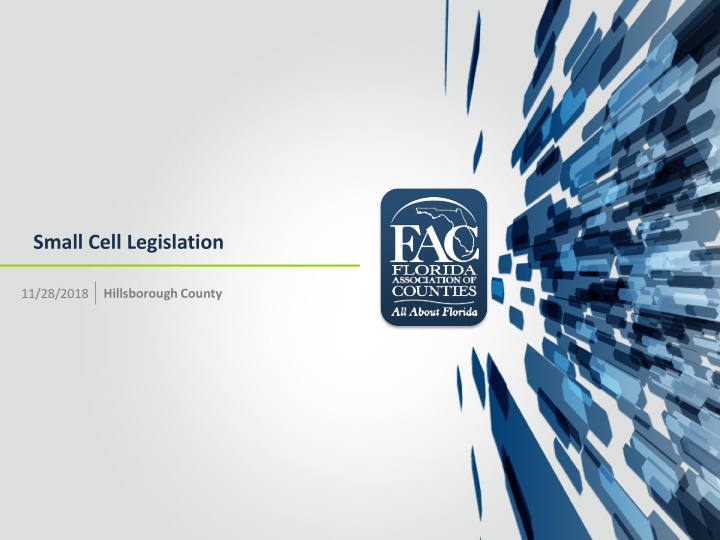



Small Cell Legislation 11/28/2018 Hillsborough County
Locating Wireless Infrastructure in Florida June 23, 2017: HB 687 signed into law, authorizing “Wireless • Services Providers” to collocate small wireless facilities (a.k.a., Small Cells) on county utility poles located in the right-of-way (ROW). • The law extends this authority to “Wireless Infrastructure Providers,” who are third-party providers (i.e., non telecoms). • NOTE: Small Cells ≠ Traditional Cell Towers
Locating Wireless Infrastructure in Florida
Locating Wireless Infrastructure in Florida Prior to HB 687: • The law allowed (and still allows) Communication Service Providers to locate traditional communication services infrastructure (i.e., poles, lines, etc.) within and along county rights-of-way, subject to local rules and regulations. • In turn, and for the privilege of using taxpayer property, these companies charge and remit back to the local government communication services tax (CST) revenue.
Effect of New Law • Prohibits a locality from regulating the collocation of Small Cells in public ROWs using traditional zoning. • Small Cells may be no more than 10’ feet above the height of the utility pole or support structure. • New poles and replacements of existing poles cannot be greater than: – 10’ above the tallest existing utility pole within 500’; or, – 50’ above ground level if there are no other poles.
Effect of New Law • Review Timeline (Shot Clock) • Collocations Applications: County’s have 60-90 days to approve collocation application • New Pole Applications: County’s have 90 days to approve new poles.
What Counties Can Regulate • Locals may enforce historic preservation zoning regulations. • Locals may enforce local codes, administrative rules, or regulations adopted by ordinance in effect on April 1, 2017, which are applicable to a historic area. • Locals may require objective design standards that require a new utility pole that replaces an existing utility pole to be of substantially similar design, material, and color or that may require reasonable spacing requirements.
County Denials • If the Proposed Collocation: – Materially interferes with the safe operation of traffic control equipment. – Materially interferes with sight lines or clear zones for transportation, pedestrians, or public safety purposes; – Materially interferes with compliance with the Americans with Disabilities Act or similar law; – Materially fails to comply with the 2010 edition of the DOT Utility Accommodation Manual; or, – Fails to comply with “applicable codes” as defined in law (e.g., Uniform building, fire, electrical, plumbing, or mechanical codes) • Applicants may cure deficiencies
Other Provisions • Applicants may bundle applications to include up to 30 Small Cells. • Locals may charge reasonable permit fees • Locals may charge a collocation fee not exceed $150 annually
Recommend
More recommend